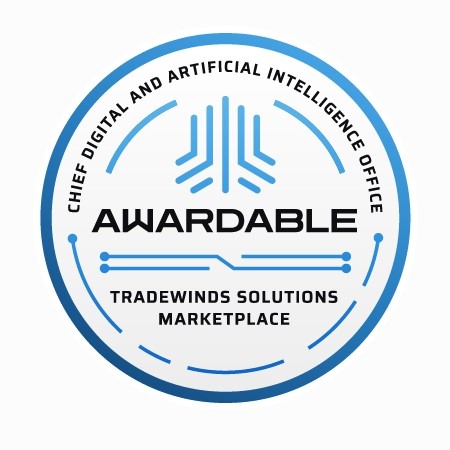You’ve created the next big thing in your field. You’re excited to take it global but are also worried about protecting your intellectual property (IP) rights. Translating patents is a vital cog in the global IP protection landscape.
If you’re a business with one or more patents, you probably know that IP rights are territorial. A patent in Australia might not be valid in South Korea and vice versa. This is a major problem if you’re looking to go global. And to fix this problem, there’s patent translation.
Put simply; patent translation is a gateway to accessing foreign markets without risking your IP being copied or stolen. Or worse, infringing on someone else’s IP!
In this article, we’ll give you everything you need to know about patent translation and the use of professional patent translation services. We’ll cover what it is, who it is for, its importance and how to go about it, with or without the aid of legal professionals. Ready to explore further? Let’s dive in.
Table Of Contents:
When Do You Need Patent Translation Services?
Understanding the Role of Patent Types
Are Patent Translation Companies Really Necessary?
Rethinking the Approach: Translation Software + Expert in the Loop
OpenNMT and the Rise of Neural Machine Translation
Benefits of AI-Enabled Translation Software
Is Patent Translation a One-Time or Continual Task?
Patent Translation Myths
When Do You Need Patent Translation Services?
As we mentioned earlier, patent translation becomes necessary for you when you’re looking to expand your business to international markets. As such, the biggest challenge that businesses face is patent protection in the market where they want to begin operations – international patents .
Translating Patents for Non-English Speaking Markets
Picture this scenario: you’re a business that offers a SaaS that helps automate email marketing for businesses in Japan. You already have a patent in Japanese for your local market.
However, now you want to offer your SaaS to businesses in the US as well. The first thing you’ll need to do is file for patent protection in the US. And for that, you’ll need a patent translation service to translate the patent from Japanese to English.
One thing worth noting is that the patent was initially written in Japanese. Hence, protecting it in the US requires it to be translated into English. However, things would have been different if you operated in a country like New Zealand, where the official language is English.
When Language Barriers Don’t Apply
At this point, you might wonder,What if there are situations where patent translation is unnecessary?Don’t worry; we’ve got you covered.
If your patent is written in English (in our case, New Zealand) and you want to expand to a market where English is accepted as a filing language (USA), you won’t need patent translation services.
But wait, there’s a catch.
While this may seem like an advantage, it comes with a cost. You’ll be limited to operating in countries where English is accepted as a filing language. Examples include:
What about those lucrative markets where English isn’t the primary language?
Countries like China, Russia and Brazil are large international markets with great potential and opportunities. If you want to do business there, you must translate your patent into the local language.
Ideal Jurisdictions for Patent Protection
Speaking of countries, let’s explore the jurisdictions that should be your ideal targets for planting your IP flag:
All nine jurisdictions listed above are large global markets and signatories to the Patent Cooperation Treaty (PCT), making them prime candidates for business expansion and patent protection. Not all of them require patent translation, of course.
At the European Patent Office (EPO), as an example, there is multilingual flexibility for patent filings, in that any patent application can be filed in any of three official languages – English, French and German. Meanwhile, for patents in Brazil, the Brazilian Patent and Trademark Office (INPI – Instituto Nacional da Propriedade Industrial) can examine and process the patent application only if it is written in Portuguese.
Understanding the Role of Patent Types
As you navigate the world of patent translation services, understanding the differences between various patent types becomes crucial. Patent system structures around the world are fairly similar, and most seem to respect the rules put forth by the World Intellectual Property Organization (WIPO). In general, most countries strive to align their IP laws and regulations with international standards to foster innovation, protect inventors’ rights, and encourage economic growth.
WIPO establishes international treaties and agreements that provide a framework for IP protection, including patents, trademarks, copyrights, and other forms of intellectual property. The most notable agreements administered by WIPO are the Paris Convention for the Protection of Industrial Property and the Patent Cooperation Treaty (PCT).
You might not be aware of this, but patent types can influence the complexity and requirements of the patent translation process. Understanding the differences will help you make an informed decision about your patent translation needs.
As a starting point, there are four main types of patents: utility, design, plant, and provisional.
Here’s a table explaining the differences between all four types and the patent translation requirements for each:
| Patent Types | Description | Translation Requirement |
| Utility Patents | Protect new inventions, processes or improvements to existing ones | Require specialized translations due to their technical nature |
| Design Patents | Protect the ornamental design of functional items | Demand accurate translation of the design features to avoid potential infringement issues |
| Plant Patents | Protect new plant varieties | Knowledge of botanical terminology and location-specific regulations |
| Provisional Patents | Temporary applications establishing an early filing date for an invention | Translation in countries that don’t accept English-language filings |
Are Patent Translation Companies Really Necessary?
Historically, businesses have relied on specialized agencies or patent attorneys for patent translation. These patent law firms or agencies often have a team of multilingual translation experts, editors and patent attorneys to help with the patent translation process.
In the past, it made sense to have access to a team of patent attorneys or legal professionals for any international patent translation and the filing process. You see, patent translation can sometimes be a time-consuming and complex process. It made sense to leave it to the experts.
However, times have changed. With rapid globalization and the rise of the digital economy, businesses are increasingly dependent on patent translations. They need a way to quickly translate patents, complete the filing process and get them to the public domain as soon as possible.
The needs of the moment are time and cost-efficiency. The regular patent translation companies can’t deliver on that. They’re either too slow or too expensive.
This begs the question:Is there a way to get high-quality patent translations that are budget-friendly and time-efficient?
Rethinking the Approach: Translation Software + Expert In The Loop
Enter the alternative: a combination of cutting-edge translation software and the expertise of an Expert In The Loop (EITL). This powerful duo can perform the entire patent translation process at a fraction of the cost.
Imagine having your patents translated on the same day without sacrificing accuracy, all while keeping your budget in check. Sounds like a dream, right?
SYSTRAN has turned this dream into reality.
OpenNMT and the Rise of Neural Machine Translation
Artificial Intelligence. It’s the biggest buzzword today. In a brief span, AI has made its way to nearly every industry. And translation is no different.
Perhaps one of the most significant breakthroughs in AI is Neural Machine Translation (NMT). This tech uses artificial neural networks to translate text by learning from examples and adapting its rules to create new translations.
Think of it as teaching a computer how to translate a piece of text into multiple languages. The more examples you give it, the better its output, or in this case, translations, become. It’s like a child learning from experience – except this time, the experience is yours to benefit from.
One notable project utilizing this powerful tech is OpenNMT – a cooperative open-source initiative founded by SYSTRAN and Harvard University.
Through OpenNMT, we aim to push the boundaries of NMT by delivering more accurate and reliable translations across multiple languages.
Benefits of AI-Enabled Translation Software
Using AI-based translation software for patent translations offers several benefits. Here are a few:
- Time efficiency
- Cost reduction
- More languages
- Better quality
- Ease of use
For more in-depth knowledge, check out our guide on the benefits of secure translation software.
As NMT continues to evolve, we see it emerging as a frontrunner in modern patent translation solutions for businesses.
Is Patent Translation a One-Time or Continual Task?
The answer to this question depends on two factors:
- The size of your business: If your business is a large corporation, you probably have a large line of products and an even larger number of patent applications.
- The nature of the industry: If you’re in a highly regulated industry, such as healthcare and finance, you’ll need to ensure that your patents are always up to date.
If either of the two applies to you, you’ll most likely need patent translation on an ongoing basis.
In today’s day and age, having a competitive edge is the surefire way to beat the competition. Smart businesses know that the answer lies in innovation and technology. What better way to innovate than by automating your patent translation process using patent translation software?
It’s fast, accurate, and cheap, allowing you to complete your patent translations efficiently. No more waiting days on end for your translation to be completed. No more having to pay a hefty sum for each patent translation you need. That’s a win-win situation!
Of course, it’s important to understand that neural machine translation software alone isn’t enough. That’s where the EITL setup comes in, ensuring the accuracy and reliability of the translations generated by the software. This expert reviews, finetunes and validates the translations, maintaining high quality while cutting costs dramatically compared to patent translation services.
At the time of writing this article, this concept has long since passed the stage of being a mere idea. This is a game-changing tactic that many companies are using to maximize their gains across multiple industries.
Patent Translation Myths
As we conclude our journey of exploring the world of patent translations, let’s take a step back and dispel long-standing myths that have permeated the industry.
One that tops our list is the belief that the patent translation process requires specialized agencies and lawyers.
This one has long been entrenched in the minds of many. And quite regretfully so. But as you saw earlier in the article, high-quality patent translation can be achieved through other cheaper and quicker means.
Embracing the Power of AI and Human Expertise
The introduction of AI in the translation industry has led us to groundbreaking innovations like NMT. Combine that with the EITL model, and this winning combination gives you top-notch patent translations without breaking the bank.
A New Era for Patent Translation
To sum up, it’s time to challenge the status quo and step into the new era of patent translation. The fusion of advanced AI translation software and human expertise is key to the future of patent translation.





